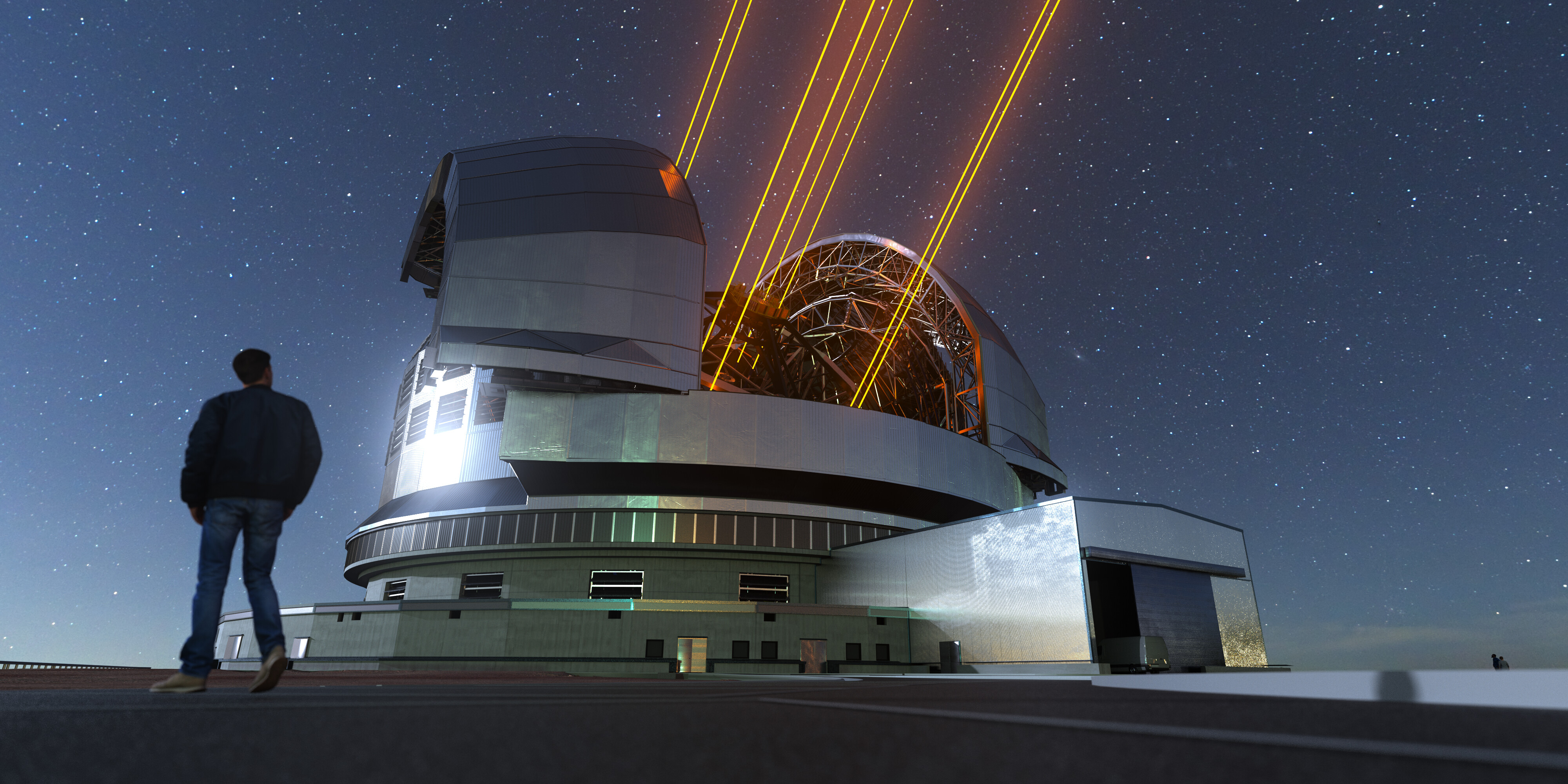News
News
PublISHED ON
UpDATED ON
Register interest in developing the next giant telescope ELT
The European Southern Observatory (ESO) is building the world’s largest optical telescope, ELT, in the Chilean desert. Right now, ESO is seeking a number of persons to work on the development of the telescope.

The 39-metre telescope will capture some of the sharpest and clearest images of the universe that have ever been taken. Illustration: ESO
The Extremely Large Telescope (ELT) will make it possible for researchers to study the universe in greater detail than ever before. The construction of ELT has already begun on the Cerro Armazones mountain in Chile, at a hight of just over 3 000 metres above sea level.
The Swedish Research Council and Big Science Sweden are now seeking one or two persons from Sweden to take part in completing ELT. The assignment is for 2–4 years at ESO, either in Garching outside Munich in Germany, or in Chile.
Positions vacant
- Control software engineer
- Control engineer
- Detector electronics engineer
- Physicist or young systems engineer for opto-mechanical system simulations
- Junior engineer for support in configuration control
- Data engineer
- RAMS
Your registration of interest should be sent to the Swedish Research Council
Please register your interest no later than 29 August 2022 via email to infrastruktur@vr.se
The registration shall consist of a CV with information relevant to the position in question, and a brief justification. We will place great weight on long-term collaboration between ESO and Sweden. The registration may be written in Swedish or English.
What happens next?
The registrations of interest will be received by the Swedish Research Council and Big Science Sweden (BISS). Sweden is one of 16 member countries of the European Southern Observatory (ESO) that are contributing to the construction of the giant telescope ELT. Big Science Sweden (BISS) is a Swedish industrial liaison office for bodies such as ESO.
Feedback on who is eligible to submit a full application will be given no later than 9 September.
The candidates assessed as fulfilling the criteria will be asked to submit a full application in English by the end of September (exact date will follow). ESO will be arranging a digital information meeting for interested candidates, and more information will be available in August.
The candidates selected by ESO will retain their employments in Sweden, and be offered an “unpaid associate” position with ESO. The Swedish Research Council will pay for the salary during the period the person is working for ESO, and will in return receive a deduction from its membership fee. If the positions are not filled using this process, ESO will issue a call for them in the standard manner, when all persons in the member countries will be eligible to apply.
Read about the telescope ELT on elt.eso.org External link.
External link.
Contact
Camilla Jakobsson, Swedish Research Council
Patrik Carlsson, Big Science Sweden
Any questions? Please email infrastruktur@vr.se
MORE WITHIN THE SAME SUBJECT AREA
-
Article |
Published 8 April 2024
Are you doing research in computational science? Then you can apply for access to Swedish and European computational resources at NAISS and EuroHPC. Here you can read more about how to do this.
Keywords:
-
Infrastructures |
Published 25 March 2024
ArchLab is a distributed research infrastructure that coordinates a number of laboratories that use natural science methods to tackle archaeological questions. The infrastructure is under construction and is coordinated from Umeå University.
Keywords:
-
News |
Published 12 February 2024
The Government is making a change to the Swedish Research Council’s instructions, which means that we can fund research infrastructure of national interest for a longer period, extending from the current 6 years to 10 years. The purpose is to improve...
Keywords:




